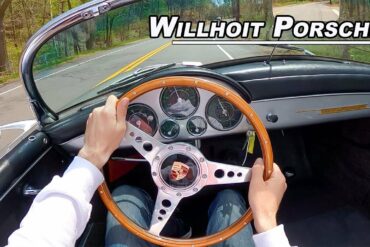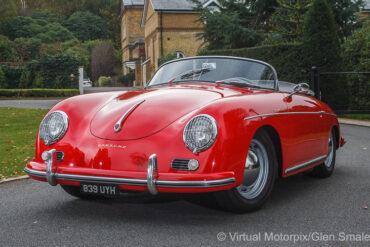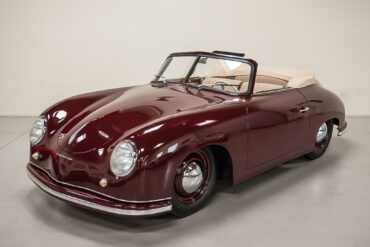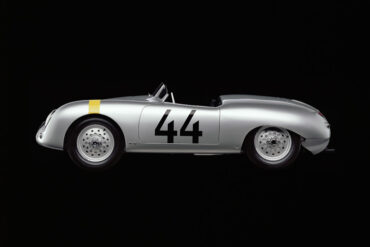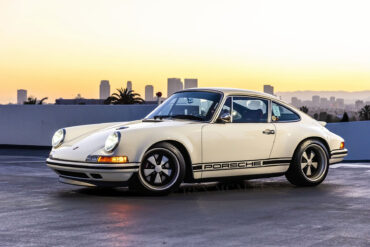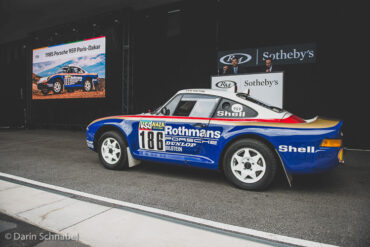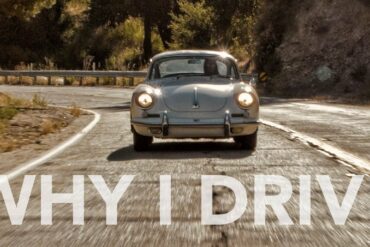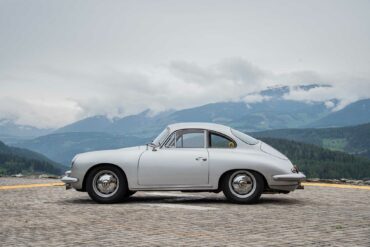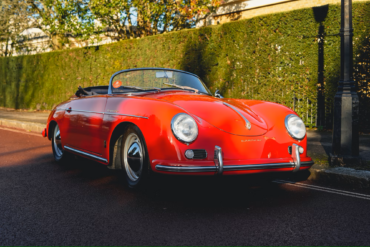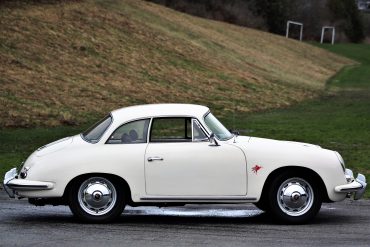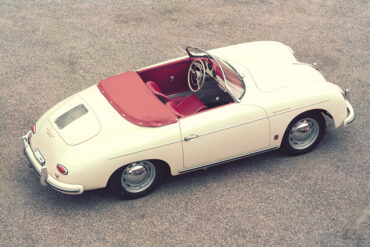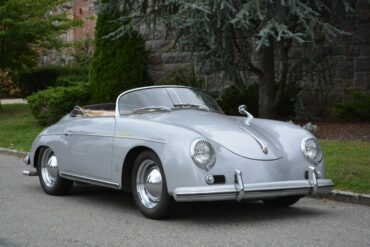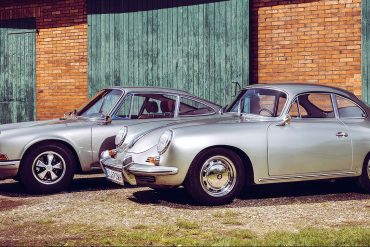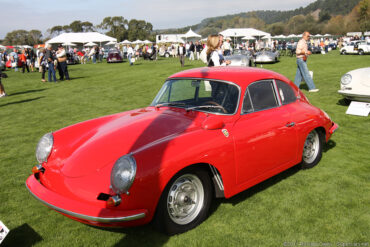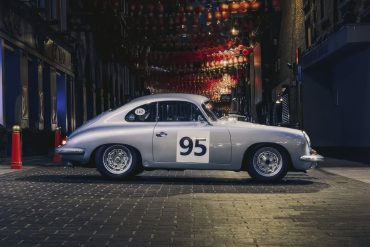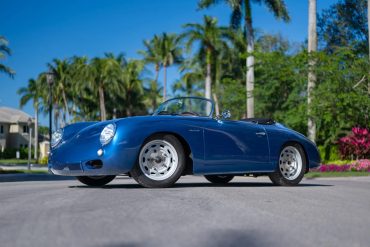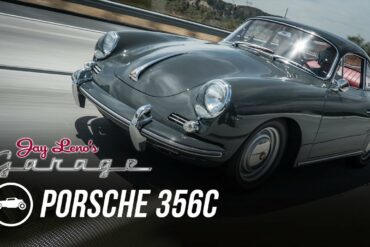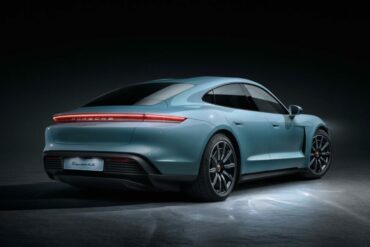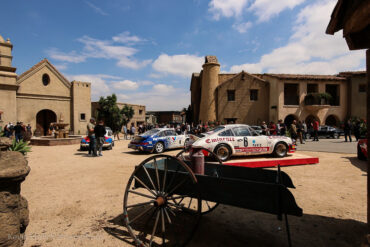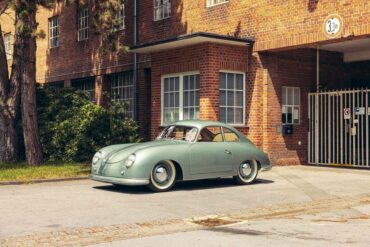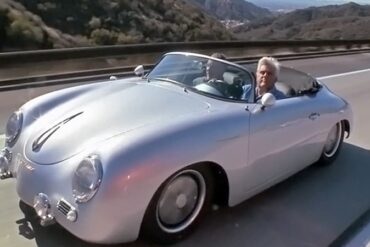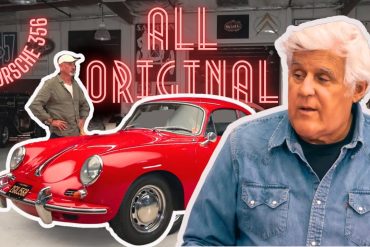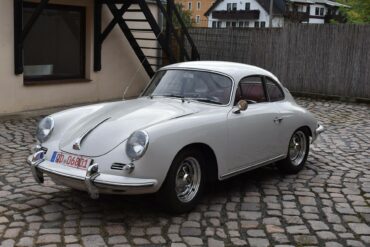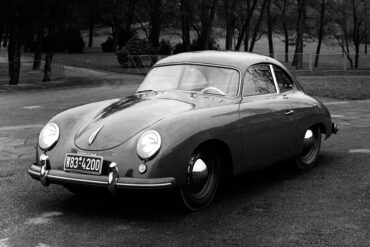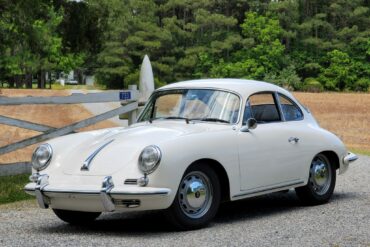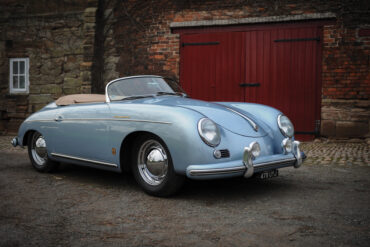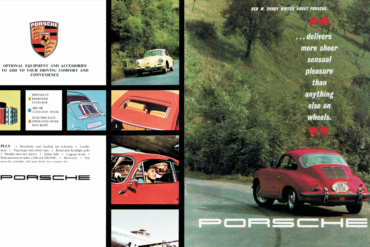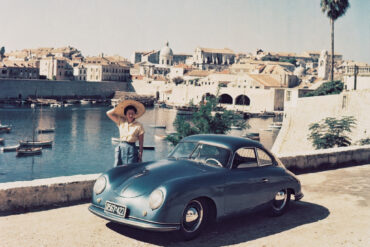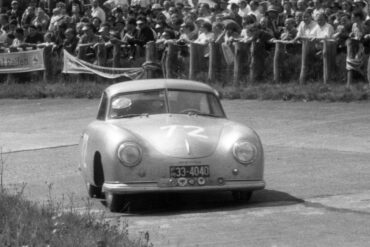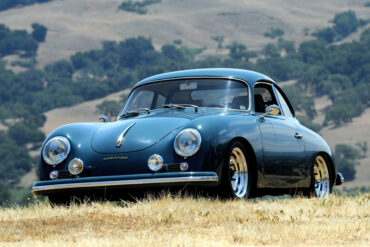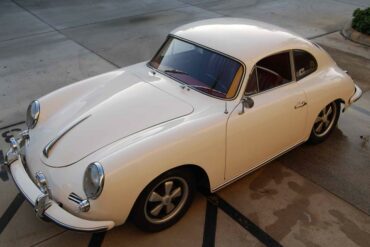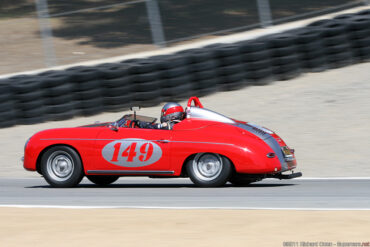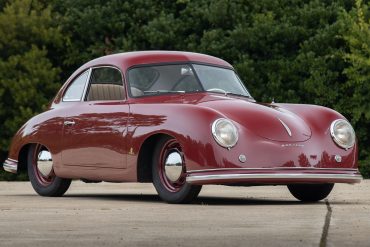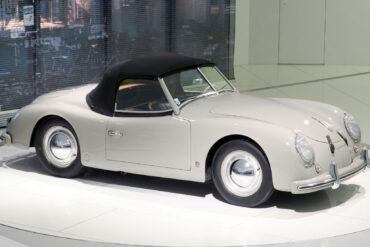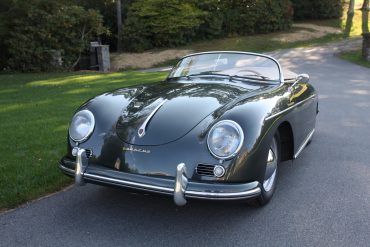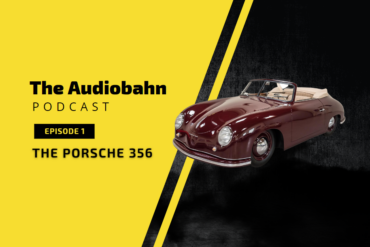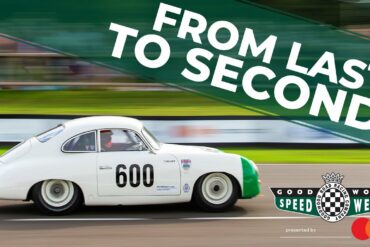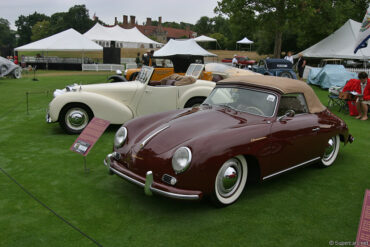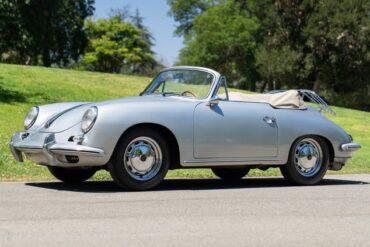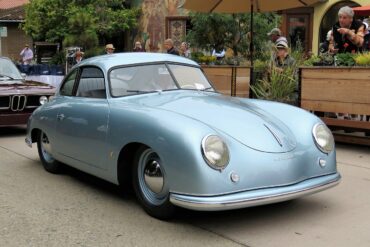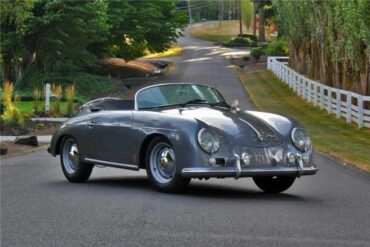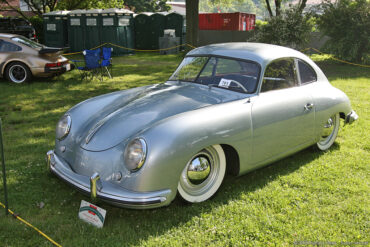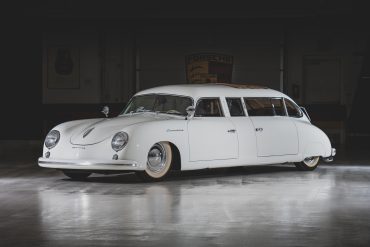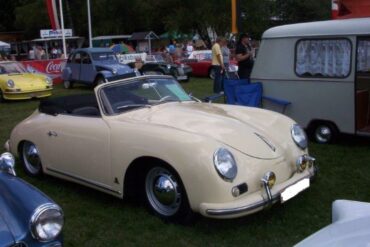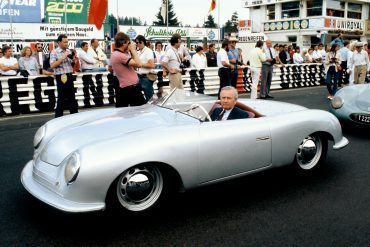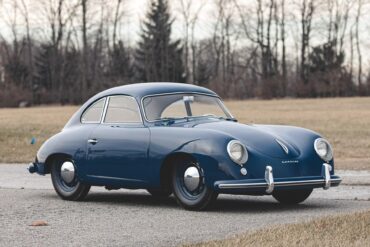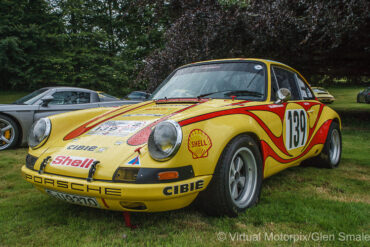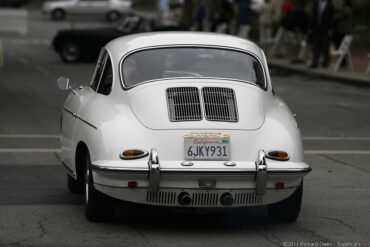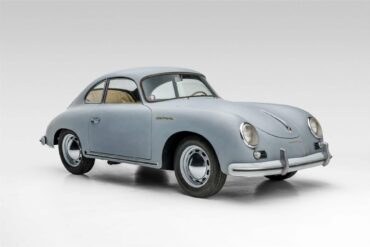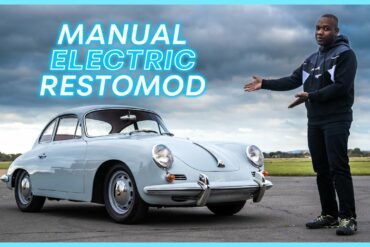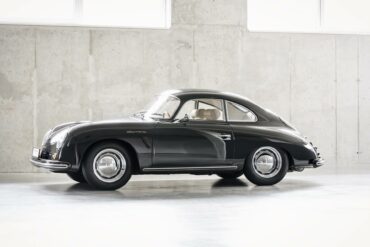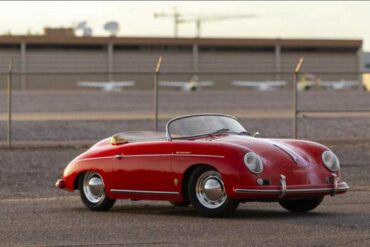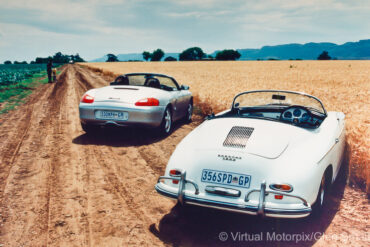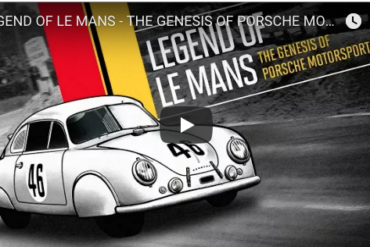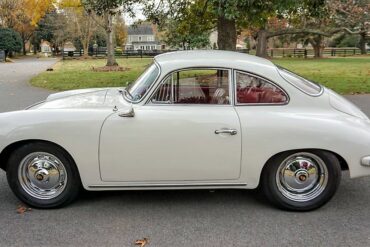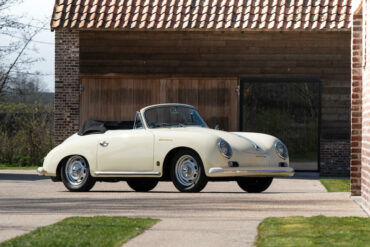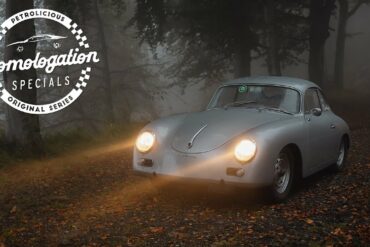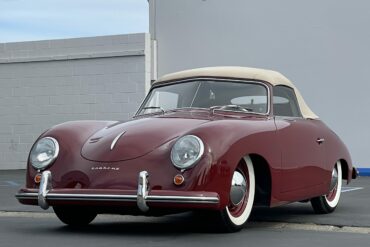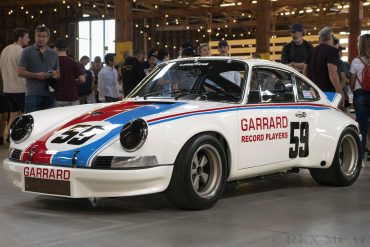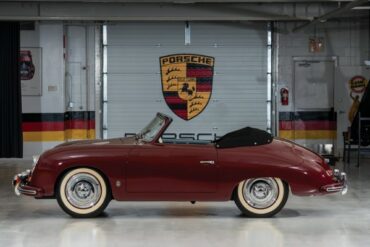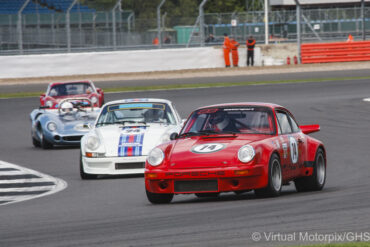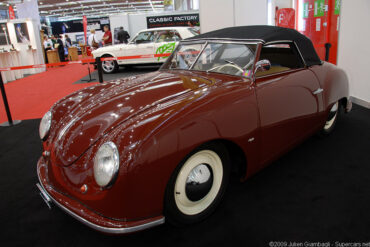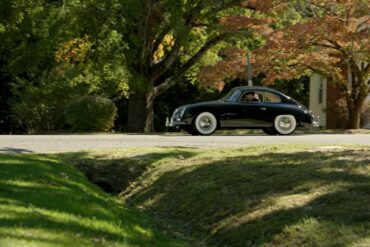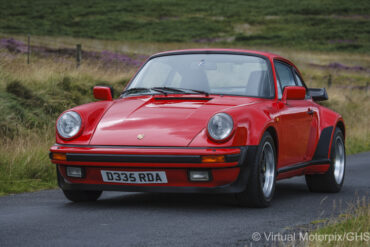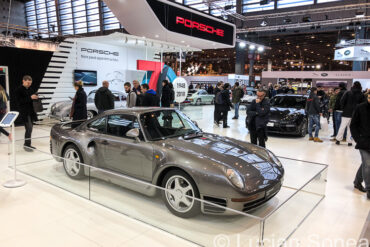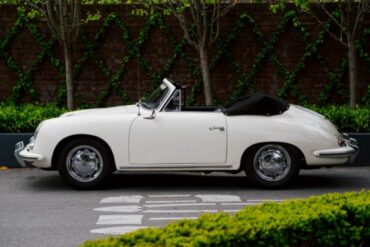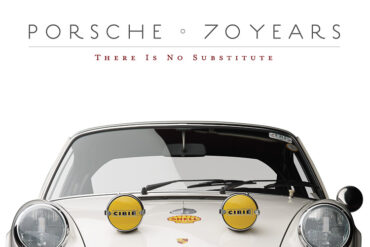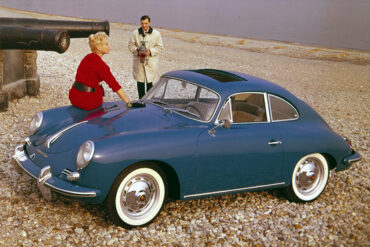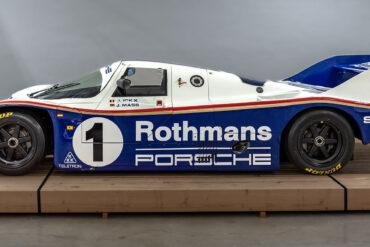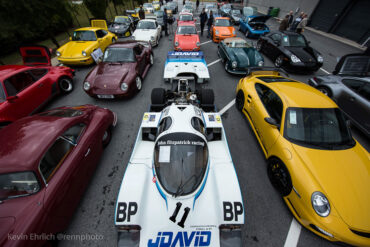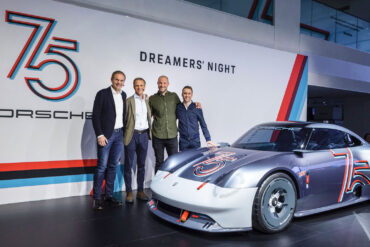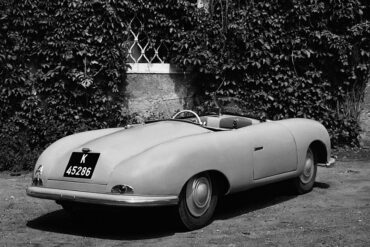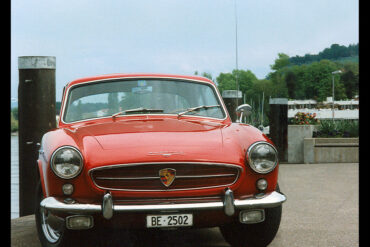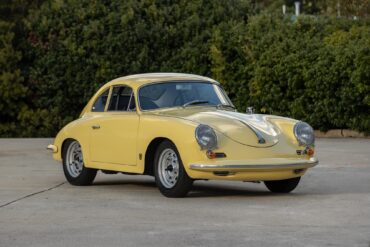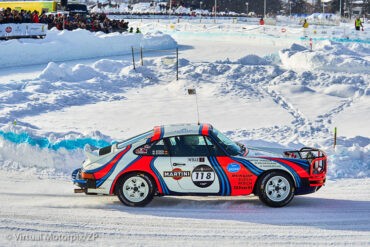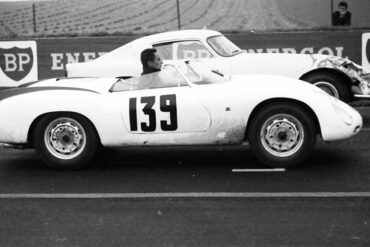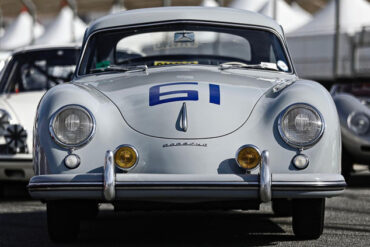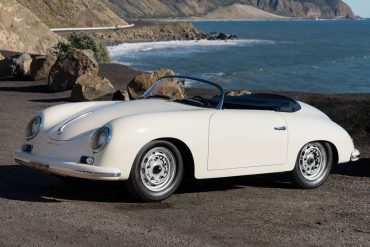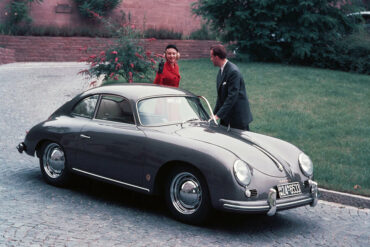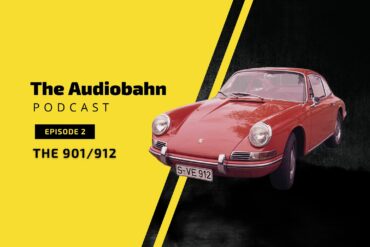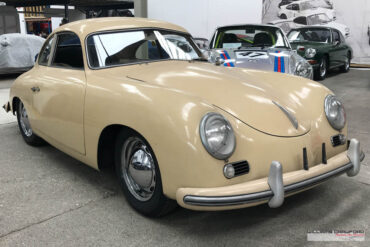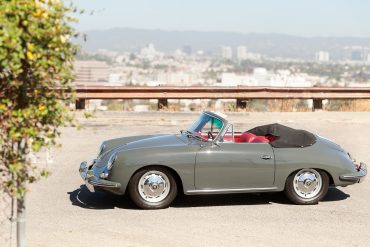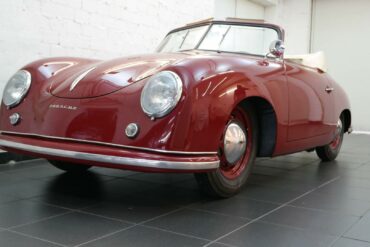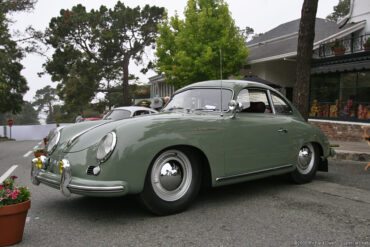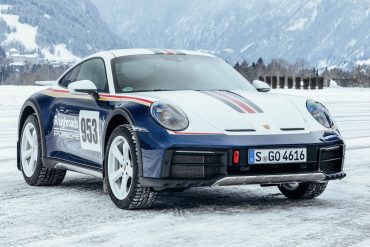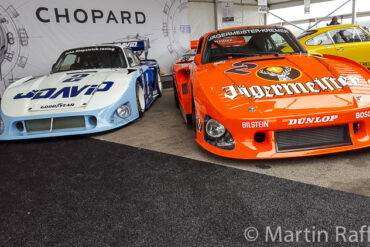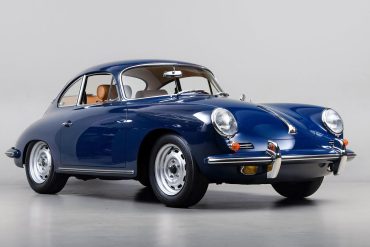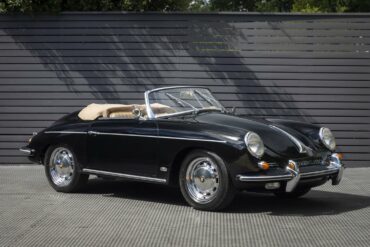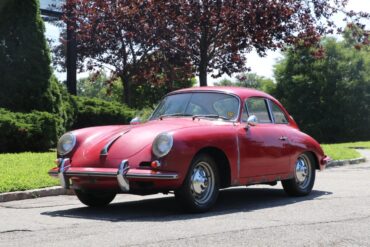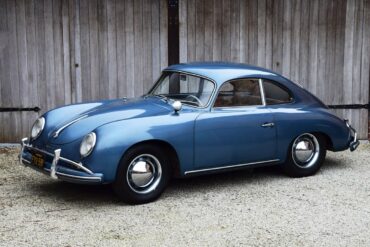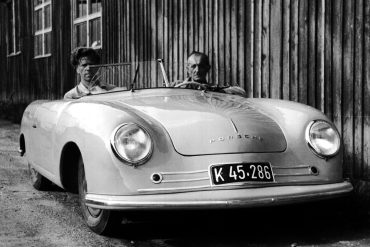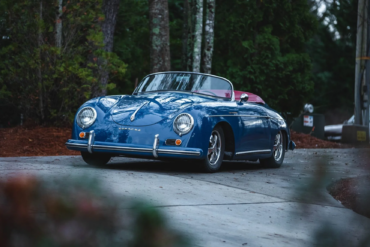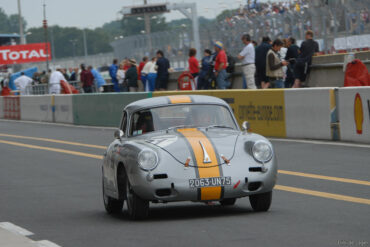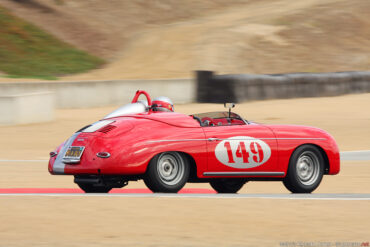POV Drive In An 1800cc Twin Plug 356A Speedster Sit back, turn up the volume and enjoy...
Porsche 356
The Porsche 356 was the first production car from Porsche. Earlier cars designed by the company included Cisitalia Grand Prix race car, the Volkswagen Beetle, and Auto Union Grand Prix cars, but it was the 356 that changed things forever for sports car enthusiasts the world over. Ferdinand Porsche, Sr. founded the company that still bears his name, but it was his son Ferdinand, widely known as Ferry, who created the Porsche we know today. In the early years after WWII, the 356 was the car that made Porsche famous. See our Porsche 356 Research Hub
1957 Porsche 356 A Speedster – looking chocolate box pretty! It was Max Hoffman, the New York-based Porsche importer, who...
Featuring a curated selection of over 1,000 Porsches, Air|Water, held on April 27th, 2024, created an impressive showcase for air...
1951 – 1953 Porsche 356/1300 Split-Window Cabriolet (Pre-A) Technical Specifications Type Series Production Car Production Years 1951 – 1953 Built...
Successful VW Dealer and racer Walter Glöckler built several specials for the German Car Championship including this roadster. It was built with assistance from Porsche in Zuffenhausen and raced without its optional hardtop in the 1952 champion before being shipped overseas for SCCA racing. Weidenhausen created the body from aluminum with a nose that bore close resemblance to the 356 Porsche but had semi-skirted rear wheels and cutaway rear corners similar to Glockler-Porsche 1 and 2.
In collaboration with Porsche Cars North America, the never-seen-before display – named “We are Porsche” – will celebrate the storied...
1985 Porsche 959 Paris-Dakar – chassis #WP0ZZZ93ZFS010015 (courtesy of RM Sotheby’s) Lot #196, the 1985 Porsche 959 Paris-Dakar, outstripped its...
We Love This 1964 Porsche 356 Why does Catherine Sutton drive? Because looking after her car is a choice, not...
Issimi is currently offering for sale a 1963 Porsche 356 B Carrera 2 GS whose engine has been rebuilt by...
Collecting Cars is currently offering a 1957 Porsche 356 A Speedster that was purchased and owned for 50 years by...
1959 – 1963 Porsche 356B/1600 S Notchback Coupe Pictures & Gallery...
1956 – 1958 Porsche 356A/1600 Speedster Technical Specifications Production Years 1956 – 1958 Released At 1955 Frankfurt Motor Show Built...
1956 – 1958 Porsche 356A/1600 Super Speedster Technical Specifications Model Year 1956 – 1958 Built At Stuttgart, Germany Body Stylist...
Did you know that 2023 sees the Porsche 356 C turning 60? We think it’s a birthday still worth celebrating,...
1960 – 1961 Porsche 356B/1600 Super 90 GT Coupe Pictures & Gallery...
This 356B Carrera GT is a superb representative of the early Carrera legend and the sole known survivor of only...
Emory Motorsports stands as the global benchmark for creating bespoke Porsche 356 vehicles, melding the essence of the Porsche brand...
Slate Grey Porsche 356 Dr. Anand Rajani takes Jay through his beloved Porsche, restored by an old friend of Big...
One of the Best ‘Outlaws’ on the Planet Emory Motorsports is a company that makes the best Porsche “Outlaw” cars....
Mid-Atlantic American Sports Car Races 1953-1962: by Terry O’Neil © Dalton Watson Fine Books This is the beginning of a...
Luftgekühlt 6 – Porsche 356 street scene There was an obvious irony to Luftgekühlt 6. Somehow an event devoted to...
1956 – 1957 Porsche 356A/1300 Coupe Pictures & Gallery...
1957 Porsche 356A Outlaw Chuck Olenyk turned this coulda-been shoulda-been coupe into a classic speedster with all factory parts –...
Porsche is most renowned for the 911, but it was the 356 that first established the German brand’s reputation. In...
1959 – 1963 Porsche 356B/1600 Super 90 Coupe Pictures & Gallery ...
The 1500 was Porsche’s newest engine which was quickly fitted with 40 PIBC Solex carburetors to produce 60 bhp @ 5000 rpm in 1952. These retained the Hirth roller-bearing crankshafts which gave Porsche enough clearance to enlarge their engine to 1500cc. Most cars from 1952 until the 356A of 1956 were powered by the 1500 engine but some left the factory with the smaller 1.1 and 1.3-liter engines. At the request of American importer Max Hoffman, 356s for the 1955 model year were badged as Continentals before reaching the U.S
The Porsche 356 SC, was the top-of-the-line variant in terms of performance for the 356 C Generation, sporting the highest specific output pushrod 4-cylinder engine ever available from Porsche with 107 HP. The SC engine produced 107 bhp at 5200 rpm and featured a stouter counter-weighted crankshaft, short skirt pistons, a more radical camshaft configuration, and large Solex carburetors. The SC was the natural successor of the previous generation Super 90 and represented the top-of-the-line variant for the final evolution of the Porsche 356.
1954 – 1955 Porsche 356/1500 Speedster Pictures & Gallery...
Porsche 356 Sales Brochures Clearly going back this far, sales catalogs for Porsche cars are hard to find. When it...
The series production didn't allow the use of handmade aluminium body panels, so, the cars were made of stamped steel panels. The first Stuttgart-built 356 have later been called as 356 Pre-A. These cars have either two separate windscreen glasses like the 356 built in Austria, or a sharply bent windscreen glass! Introduced in 1948, the Porsche 356 Pre-A Coupe was the first variant available for the Porsche 356. The engine started as a 1100 cc flat four that produced 40 hp. It was available as a coupe and cabriolet body style.
Sorry, but you do not have permission to view this content....
1956 – 1957 Porsche 356A/1300 Coupe Technical Specifications WHAT BODY STYLE? 2 door fixed-head coupé with 2+2 seats HOW LONG?...
1959 – 1963 Porsche 356B/1600 S Coupe Pictures & Gallery...
1959 Porsche 356A/1600 Convertible D Technical Specifications Model Year 1959 Built At Stuttgart, Germany Body Stylist Erwin Komenda Coachbuilder Drauz...
David vs. Goliath The story of Dr. Ferdinand Porsche is, without doubt, one of the most fascinating tales of dreams...
Sorry, but you do not have permission to view this content....
“There are no half measures with Porsche cars – people either love them or detest them. And even if they...
Episode One: The Porsche 356 Summary Welcome to The Audiobahn, the Stuttcars.com podcast focused on all things Porsche. In our first...
8 minutes of Porsche 356 goodness British Touring Car runner-up Sam Tordoff had quite the time in the Fordwater Trophy...
1955 Porsche 356/1500 Continental Cabriolet (Pre-A) Technical Specifications Type Series Production Car Built At Stuttgart, Germany Body Stylist Erwin Komenda...
1964 Porsche 356C/2000GS Carrera 2 Cabriolet Technical Specifications Model Years 1964 Built At Stuttgart, Germany Engine 2.0 L Aircooled Flat...
1951 – 1953 Porsche 356/1300 Split-Window Coupe (Pre-A) Pictures & Gallery...
1956 – 1957 Porsche 356A/1300 Super Speedster Technical Specifications WHAT BODY STYLE? 2 door fixed-head coupé with 2+2 seats HOW...
1950 – 1951 Porsche 356/1100 Split-Window Coupe (Pre-A) Pictures & Gallery...
The man behind this 356 limousine is John Dixon who decided to create a personalized Porsche-based limousine for his daughter’s...
1952 – 1954 Porsche 356/1100 Cabriolet (Pre-A) Pictures & Gallery...
The Porsche 356/1 was the first real car created by Ferdinand "Ferry" Porsche. This prototype car was a two-seater open roadster with a mid-mounted, air-cooled flat-4 engine of 1,131 cc displacement. While the body was an original design, most of the mechanicals were from the Volkswagen Beetle. Only one 356/1 was made.
1952 – 1954 Porsche 356/1100 Coupe (Pre-A) Technical Specifications Type Series Production Car Production Years 1952 – 1954 Built At...
Rennsport Collective, Donington Hall, 20 July 2019: Porsche 996 GT1 Evo 1997 on display with numerous other Porsche classics They...
1962 – 1963 Porsche 356B/2000GS Carrera 2 Coupe Technical Specifications Type Series Production Car Built At Germany Engine Type 548...
1956 – 1958 Porsche 356A/1500GS Carrera Coupe Technical Specifications Type Series Production Car Built At Germany Coachbuilder Reutter Karosserie Price $...
Electric Porsche 356 Review: An EV For Petrolheads! The Electrogenic 356 is no ordinary Porsche restomod. This one might look...
Available in all body styles, the Porsche 356 A Carrera featured the race car-derived 1500 cc four-cam engine (type 547) developed for the Porsche 550 Spyder. Rated up to 110 hp, it was the top performance 356 A model available. Variants included the Carrera 1500GS and Carrera 1500GT, differentiated by their horsepower. In 1958, Porsche updated the Carrera engines (now type 692), increasing the displacement up to 1600 cc and output increased to 105 and 110 hp respectively. In 1959 horsepower for the GT increased again to 115.
1956 – 1957 Porsche 356A/1300 Super Speedster Pictures & Gallery...
A 1997 Porsche Boxster (left) and a 1958 Porsche 356 A Speedster (right) The day dawned bright and clear with...
THE GENESIS OF PORSCHE MOTORSPORT…watch the restoration by Rod Emory of the #46 Porsche 356 SL that won its class...
Porsche 356 Spare Parts Catalogs (1960 – 1965 Model Year) Porsche 356B/356C These official Porsche PET Diagrams and codes for...
Of all the Carreras, the 1959 de Luxe was best suited for the road. Not only was it the most luxurious 356, but it was also was the only year to get the large 1600cc 4-cam engine. The Type 692/2 engine was a much different engine than the 1500cc unit it replaced. The newer unit used plain main bearings instead of roller bearings. Furthermore, the distributors were moved to the end of the crankshaft and the engine shroud was better attached to the 356A body. With twin Solex carburetors, the somewhat detuned version offered 105 bhp @ 6500 rpm.
Four-Cam Coupe Porsche 356 Carrera GS/GT Driven The Porsche 356 brought the automaker into a new era. The model started...
1956 – 1957 Porsche 356A/1300 Cabriolet Pictures & Gallery...
From the creators of Luftgekühlt comes the largest single-brand automotive experience to hit Southern California. It embarks on a fresh...
1954 – 1955 Porsche 356/1300 Split-Window Cabriolet (Pre-A) Technical Specifications Type Series Production Car Production Years 1954 – 1955 Built...
Porsche 356/2 Gmünd Cabriolet Specifications type Series Production Car production years 1948 – 1951 built at Austria production 41 price...
Join Road Scholars’ Cam Ingram and Udo Reisinger as they take the 1958 Porsche 356A Coupe on its final post...
Celebrations for the #55 Porsche 550 Spyder after finishing third in the 1954 La Carrera Panamericana. Sitting on the #55...
Porsche 959 Coupé (only 292 models produced in 1988 in order to obtain Group B racing homologation), 6-cylinder boxer turbo,...
1959 Porsche 356A/1600GS Carrera de Luxe Coupé Pictures & Gallery...
1964 – 1965 Porsche 356 C 1600C Cabriolet Technical Specifications Model Years 1964 – 1965 Built At Stuttgart, Germany Engine...
Porsche 70 Years – There Is No Substitute: by Randy Leffingwell © Quarto Publishing It’s a heavyweight book, landscape in...
The 356 B T5 Coupe was the direct replacement of the Porsche 356 A Coupe. The T5 Coupe bodies were produced by German coachbuilder company Reutter. The 356 B T5 Coupe played a huge role in the growth seen by Porsche in the early 1960s. Like the Cabriolet, Roadster, and Notchback Coupe siblings, the Coupe was offered with 1600, 1600S, S90, and Carrera engine options paired to a four-speed synchromesh 741 transmission. In late 1961, Porsche introduced the T6 body and updates, which built on the success of its very popular predecessor.
If you were lucky enough to visit Rennsport Reunion 7 in Monterey, California, then chances are you gazed at one...
Porsche & Le Mans Newly released “Racing with Giants” video features archival footage of Le Mans past and present, along...
Lot 200 – 1983 Porsche 956-110 awaits its turn on the auction block The mental wheels started turning when RM...
Celebrating the birth of a legendary brand In 1948, Ferry Porsche realized his dream of a sports car: with his...
Porsche 356/1 Gmünd Coupé Specifications type Concept / Prototype Car built at Austria production 1 engine Air Cooled flat-4 displacement...
Ferry Porsche had in fact requested Swiss technicians to make a less sporty and more elegant version of the 365 B and thus the 1600 Beutler Coupè was born. This project is a 2+2 based on a Porsche 1600. Like the Porsche, the car is built on a VW platform, but includes Porsche elements such as the brakes and the engine. It was built in 5 copies before production was stopped in 1957 due to a change in commercial strategies by the German company.
For decades, Porsche has established itself as a renowned car manufacturer, celebrated for its adaptability and agility. It has consistently...
Ice Races GP, Zell am See, 19-20 January 2019: #118 Porsche 911 SC driven by Michael Stock After a 45-year...
The original Porsche Carrera Zagato Speedster, the first Zagato bodied Porsche of the brand’s history, was built in 1958 for French gentleman driver and expert Porsche pilot Claude Storez, one of the best French pilots of that time. He started his career in early 50s and became soon a skilled pilot. In late ’57 he was looking for the “ultimate” 356 for the 1958 races season. He put an order to Porsche AG for a 356 A Speedster (the lightest version available) with a Carrera engine and GS specs (the most powerful at that time).
Porsche – The Golden Years: Leonardo Acerbi © Virtual Motorpix/Glen Smale It is always a pleasure when a top-quality book...
Kim Copperthite watches the Porsche 919 Hybrid Evo during its record run at the Porsche Rennsport Reunion VI, Laguna Seca,...
Carrera Speedster In 1955, less than a year after the 356 Speedster model was introduced, Porsche built the first example...
Porsche 356 Spare Parts Catalogs (1950 – 1959 Model Year) Porsche 356/356A Parts These official Porsche PET Diagrams and codes for...
Episode Two: The Porsche 901/912 Summary Welcome to The Audiobahn, the Stuttcars.com podcast focused on all things Porsche. In our first...
1954 – 1955 Porsche 356/1300 Split-Window Coupe (Pre-A) Pictures & Gallery...
1959 – 1963 Porsche 356B/1600 S Cabriolet Technical Specifications Type Series Production Car Production Years 1959 – 1963 Built At...
1954 – 1955 Porsche 356/1300 Super Cabriolet (Pre-A) Pictures & Gallery ...
Each year, Porsche enthusiasts from across Norway gather in the picturesque village of Lærdal to celebrate air-cooled Porsche history. Surrounded...
1955 Porsche 356/1500 Continental Coupe (Pre-A) Technical Specifications Type Series Production Car Built At Stuttgart, Germany Body Stylist Erwin Komenda...
Before we submerse ourselves in a new year of challenges and innovations, we take a look back on out top...
Rennsport Reunion poster collection, from Rennsport I through VI It’s hard to know where to begin when writing a report...
In discussions about vintage Porsches, the iconic 356 always comes to light as the cornerstone of air-cooled Porsches. Respected for...
In September of 1959 Porsche revealed their fully updated 356 known as the 356B. This had a completely revised body that was more suitable for the American market. New to the model was the Type 616/7 Super 90 engine which was an indirect replacement for the Carrera de Luxe models. The engine was fully revised with a new intake manifold, a larger Solex 40 PII-4 carburetor and the Carrera air filters.
1961 – 1963 Porsche 356B/1600 Super 90 Notchback Coupe Technical Specifications Type Series Production Car Production Years 1961 – 1963...
1956 – 1957 Porsche 356A/1300 Super Coupe Technical Specifications WHAT BODY STYLE? 2 door fixed-head coupé with 2+2 seats HOW...
Sorry, but you do not have permission to view this content....
Live now on Bring A Trailer is fantastic example of a 1955 Porsche 356 Speedster finished in Oslo Blue over...
1959 – 1963 Porsche 356B/1600 Coupe Pictures & Gallery...
1959 Porsche 356A/1600 Convertible D Pictures & Gallery...


